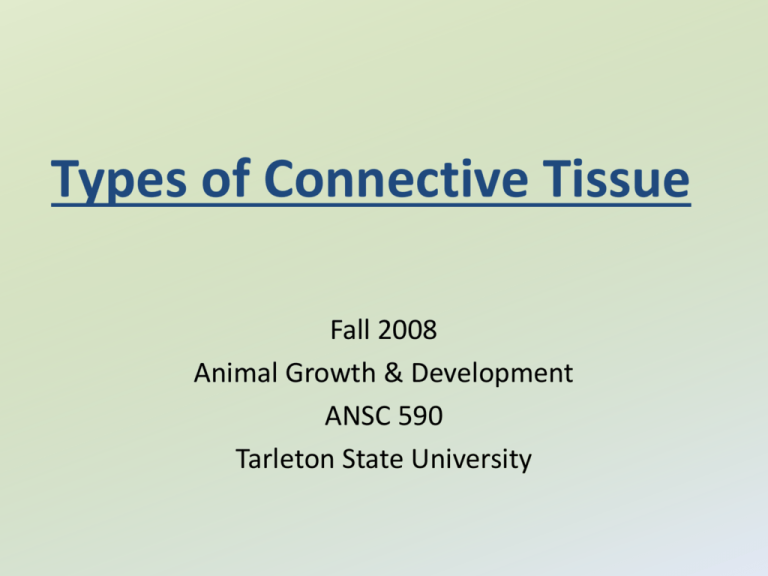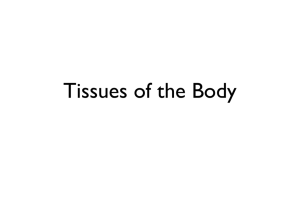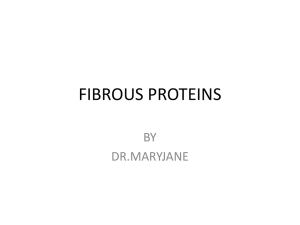4 Types of Connective Tissue
advertisement

Types of Connective Tissue Fall 2008 Animal Growth & Development ANSC 590 Tarleton State University Major Functions of Connective Tissue • • • • • • • • • Protective package Support and bear weight Mobility Transmit force Pathway for cell migration, ions, proteins, metabolites, etc. Structural barrier and immune response to infection or invasion Organ maintenance, defense, and repair Wound healing Storage Collagen & Elastin Percentage Comparisons in Selected Connective Tissues * *Adapted from A.J. Baily & N. Light, 1989 4 Types of Connective Tissue 1. Loose 2. Dense 3. Adipose 4. Supportive Loose Connective Tissue Characteristics • Porous • Highly flexible yet strong • Relatively few collagen or elastin fibers • Highly vascular • Many cells Dense Connective Tissue Characteristics • • • • Many fibers High in Collagen and Elastin Very strong with little flexibility Minimally vascular Dense Connective Tissue Regular vs. Irregular • Regular has aligned fibers for maximal tensile strength. - i.e. tendons • Irregular Dense Connective Tissue has a random lay of fibers to resist forces from many directions by always providing opposition. - i.e. skin Adipose Connective Tissue Characteristics • • • • • • • • • Specialized Stores triglycerides Stores energy Insulates Pliable Cushions Important for animal growth Around critical organs Highly vascular Supportive Connective Tissue Characteristics • Specialized • Matrix consists of hyaluronic acid, chondroitin 4-sulfate, chodroitin 6sulfate, keratin sulfate, and chondrocytes • Minimally vascular so thin and layered Supportive Connective Tissue Interstitial Growth vs. Appositional Growth • Interstitial Growth occurs within the tissue by filling newly-formed lacunae then creating replacement lacunae. • Appositional Growth occurs outside the tissue by forming new layers. Supportive Connective Tissue 3 Types of Cartilage 1. Hyaline Cartilage: • • • Many collagen fibrils - 40% of total weight of hyaline cartilage Bluish-white Resistant to constant pressure and friction – i.e. rigid rings of trachea 2. Elastic Cartilage: • • Much elastin with little collagen Very flexible without gross rigidity – i.e. external ear 3. Fibrocartilage: • • • Mostly collagen Very rigid with little or no flexibility – i.e. between pelvic bone & pubis Referred to as “Almost Bone”






